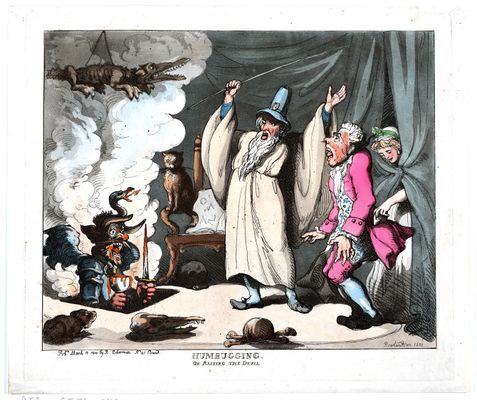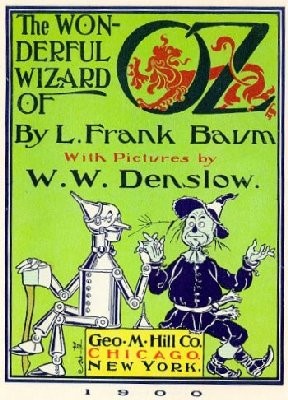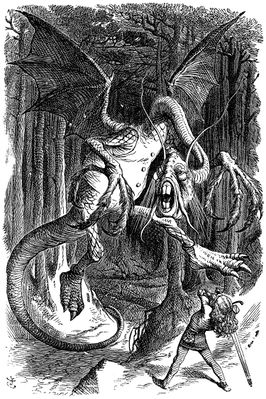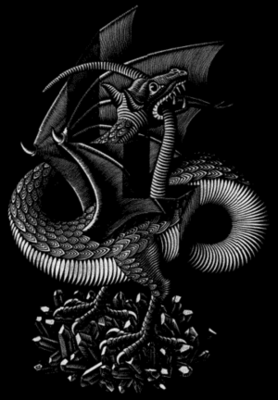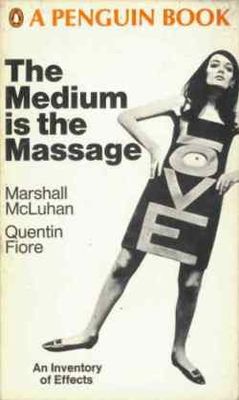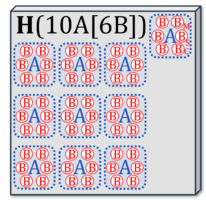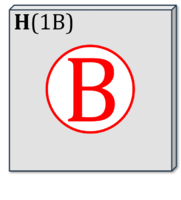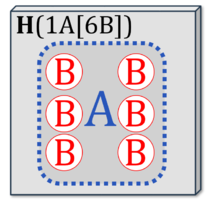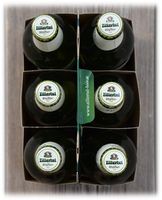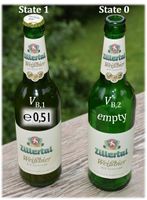X-mass Carol
| Gnaiger Erich (2020) A canonical carol on quantities, symbols, and units. MitoFit Preprint Arch 2020.4.v0. |
Author ()
Abstract: Pre-preprint version 0 (v0.1) (2020-06-13) last update 2020-06-16
Humbug is a hot issue at a time of bugs and irreproducibility in science, fake news in social media, and a sense of mistrust in the solutions of the COVID 19 crisis. Trust in science calls for a language that is understood. Some fundamental terms, symbols, and units at the basis of counting and measuring are presented as a Canonical Carol from medium to message to meaning, to crack the code for communication from physical and chemical sciences to molecular biology and mitochondrial physiology. The theme is: BAH! Humbug! The meaning of BAH! will be explained extempore, the retrograde and self-referential meaning of Humbug! is: back to Humbug ― the end and the beginning. • Keywords: Amount of substance, Bit, Body mass, Cell respiration, Buglish, Canonical and practical, Canonical ensemble, Concentration, Count, Dimension, Entity, Extroduction, Flow, Flux, Format, IUPAC, International System of Units, Isolated mitochondria, Living cells, Mass, Measure, MitoPedia, Molar mass, Normalization of rate, Object, Organism, Permeabilized cells, Publish, Sample, System, Unit, Volume
Extroduction
- This article aims at providing a new understanding of the concepts of counting and measuring. Although we are familiar with the concepts of counting and measuring — or we are counting and measuring without the need to be familiar with these concepts —, established systems of quantities, symbols, and units do not sufficiently reflect the fact that quantities for measurement of size (mass [kg], volume [L]) are opposite to a group of quantities that are strictly linked to counting (count [x], amount [mol], charge [C]). The units 'mole' for amount and 'coulomb' for charge are connected to the unit 'counting-unit' [x] for count by fixed stoichiometries, but [x] is not part of the International System of Units (SI).
- This article is relevant to all areas of science and philosophy and all disciplines that are involved with counting and measuring. However, for strictly Practical-Technical Realists R(PT), the Canonical Carol is too theoretical. For Technical-Theoretical Nerds N(TT), the Canonical Carol is too practical. If you identify yourself as a PTC-type of the Brave person B(PTC) — Practical&Technical-Theoretical&Canonical — then pop up to the PDF of the Canonical Carol.
- The Canonical Carol is written in recursive form about recursive systems, where an experimental system is contained in an instrumental system, an extroduction introduces the introduction, and the quantity 'count' devours its own physicochemical unit x. Enjoy the Canonical Carol from beginning to end, the Carolical Canon from end to beginning, to realize that the beginning is not in the introduction, and the beginning is not in the Canonical Carol — the beginning is at a Higher-level H in the canon, and level H is the extroduction.
- This extroduction is the external or executive introduction to the Canonical Carol.
- Push down to »Extroduction«
- This extroduction is the external or executive introduction to the Canonical Carol.
Extroductory Canons on quantities, symbols, and units. Compositions composed in the spirit of Douglas Hofstadter
- While there exists only one single Canonical Carol, there is a potential maximum number of Extroductory Canons set by the global number of counting human people or by the number of groups of counting human people. Babies can count before being taught to count and before talking, and the ability to count is not restricted to the human species. For each group of persons and species a different pattern triggers counting. This trigger-pattern should be encoded into each specific variation or Voice of Extroductory Canons. Such a large number of Extroductions cannot be included within the Canonical Carol, since it would blow up its word count beyond a reasonable number of words allowed in a scientific system of publication. The word-count expansion in the extroduction aims at introducing different PTC-audiences to the why should I open the box, and to the how to read it's contents. The Extroduction is the manual for the Canonical Carol written in different Voices, while the Canonical Carol is written in different Staves. As usual, this manual for the Canonical Carol cannot be well understood without reading the Canonical Carol and BEC 2020.1, which should be used as a manual for the Extroductory Canons. As always, read the manual first.
Table of Extroductory contents
H: Historical stories, novels and philisophical bestsellers. BAH! Humbug!
Figure H 1. Thomas Rowlandson Humbugging, or raising the Devil (1800), illustrating Charles Dickens and L. Frank Baum’s Bah! Humbug! - Source
- BAH! Humbug! ― is the theme of the canonical carol on terminology that found its roots in Charls Dickens novella A Christmas Carol (1843) (Figure 1) and L Frank Baum’s The Wonderful Wizard of Oz (Figure 2). But first of all BAH is inspired by a canonical Carroll: Lewis Carroll’s novel Through the Looking-Glass (Figures 3 and 4), the sequel to Alice's Adventures in Wonderland (1865) referred to by Douglas Richard Hofstadter in his book Gödel, Escher, Bach: An eternal golden braid. A metaphorical fugue on minds and machines in the spirit of Lewis Carroll (1979). MC Escher’s Dragon ― the Ouroboros (Figure 5) ― is a canonical self-referential symbol that penetrates BAH from beginning to end and from the end to the beginning: when the Highest-level system H devours itself and becomes its own Bit B, and backwards when Bit B creates its own system B, when the object Body B inflates into its own system Body B ― when the medium is the message. The book The Medium is the Massage (1967) was co-created by Herbert Marshall McLuhan and Quentin Fiore (Figure 6).
Figure H 5. Maurits Cornelis Escher Dragon (1952) – the Ouroboros
T: A Funny Table
- Subtle dualistic meaning of a term and a mix-up of context are at the heart of a good joke: the meaning of a term in one context takes us by surprise when pushed into a different box with a paradoxical result, and when we pop up we are laughing, mainly at our own cognitive selves. Recursive laughing is compassionate, terminating laughing is unconcerned. Did you get it: this was no joke? Please, sit down at a table, fill in a pint of beer, and fill in Table T, particularly if the joke was good, but you did not laugh.
- Table T. Fill in Funny Table T. — Manual to Table T: If you do not understand English or the English was un-understandable, but the joke was VERY good, then fill in "Good joke? Y" \ "Funny? N". Am I a joke and not laughing? The owner of this Manual declares not to hold any material, philosophical, or psychological responsibility for cases, when the joke was not good ("Good joke? N"), but you did laugh ("Funny? Y").
# Introduction Body Good joke? Y/N Funny? Y/N What? 1a A terminating non-laughing double-recursive joke If it does not make you laugh, don't blame it on the joke. — Why did you not laugh? It was such a good joke! Y/N Y/N The Canonical Carol about jokes 1b A Funny Joke party Funny jokes J1 and J2 enjoy another beer together. J1: My good friend J2, you really improved a lot since the last beer, have another one and you will feel as good as me. — J2: Indeed my dear J1 (ha), I feel much better (haha), and I cannot stop laughing (hahaha), but I do not see you laughing (hahahahahahaha). — J1: Ha? Y/N Y/N The Canonical Carol of jokes 2 BAH! Humbug! This cannot be completely useless, it can serve as a bad example. Y/N Y/N Humbug 3a Except at infinity (bottom-up X-mass party) Parallel lines cannot know what they have in common. They never met. Y/N Y/N Open 3b On return from infinity (top-down X-mass party) Parallel lines know what they have in common. That's why they want to never meet again. Y/N Y/N Closed 4 Author: Henny Youngman When I read about the evils of drinking, I gave up reading. Y/N Y/N Blame it on Henny 5a Through the looking glass Looking into a mirror I can't see myself looking. Y/N Y/N Bad quality: eyes or mirror? 5b I and me like a good mirror I, for one, like Roman numerals. Y/N Y/N In love with I-self 6 A practical guide to units Doctor: I have to tell you quickly that you suffer from a terminal illness and have only ten to live. — Patient: What do you mean, ten? Ten what? Months? Weeks?! — Doctor: Nine. Y/N Y/N By now: "Eight"
- In the Practical-Technical world, dualistic terminology is not perceived as a problem. It would be funny, if perceived as a problem. Laughing about Funny Table is funny only, if you see a problem when there is a problem. What is funny in the Funny Table is another question, but not a problem.
- In practical language we cannot but (1) use dualistic terminology, (2) remain vague aboout background, skipping accurate and lengthy definitions of context, and (3) give a sloppy representation of the hierarchy in nested compartments when pushing down and popping up confusingly between different layers. Practical language works very well, that is why it can be used with great confidence. Does a term describe the object of our investigation? Or is the term an object, worthwhile of canonical investigation?
- A funny joke is funny, but why does the Funny Joke not laugh?. Explaining a funny joke is not funny. Explaining a funny joke is a nagging problem in all cases, it is both boring and insulting. If you explain one of the jokes to me, it is insulting because I am perceived as the one who does not understand, and it is boring because I am the one who (1) has understood, or (2) did not understand and is not interested in understanding. It really needs an extroduction to make me interested in understanding something that I do not understand. It is the inherent curiosity that makes me interested in finding out what is funny in something not perceived as being funny. Inherent curiosity is the fun of finding funny things instead of just laughing about a funny thing, creating a funny table instead of just finding a joke funny in the table, inventing an instrument and writing a manual instead of just using the instrument and not reading the manual. The extroduction to inherent curiosity is the evolutionary background that shaped inherent curiosity over millions of generations: without inborn inherent curiosity a species does not survive. That is why inherent curiosity is a necessary feature of healthy children. Whereas intelligent children enjoy telling a joke again and again, this attitude fades away as a system becomes mature. A good scientist enjoys running an experiment again and again, learning more about reproducibility, variability, and outliers, until the apparent outlier pops up as the greatest discovery. A good runner enjoys running again and again, until the experience of perfection in running replaces the experience of running. Loosing inherent curiosity is loosing health. This comes sooner or later with aging.
- Canonical form can be seen in the effort to explain and investigate a joke without end of explaining and investigating. This is important, because a joke that is not only good but interesting has more than one layer. When I am laughing about a joke in a group of laughing buddies, perhaps different layers of the joke have been perceived by anybody laughing. Even if you are not laughing about an interesting joke, I cannot know if you are not laughing because the first layers were trivial and you did not get the deeper layers, or if you did not get any layer at all. In canonical form the problem is solved by slicing off layer by layer to see all the bits. This can drive everybody crazy or put us all asleep, if the practical aim is lost — if it is not fun. Is the fun in the doing, or in the objective of the doing? Like every form, canonical form needs context. Canonical form is inappropriate at an Xmas party, but is the whole meaning of the X-mass party. Canonical form is literally out of place in an Abstract or even in the entire publication, to keep it readable. But canonical form may be essential in a Manual, which makes it unreadable. Inherent curiosity keeps us going in canonical form in the context of a practical question. Canonical and practical may be seen as the opposites in a spectrum of practical-technical-theoretical-canonical regression. Inherent curiosity is lost, if the opposite ends are disconneted. Then you become either a practical-technical realo who stays away from the kids, or a theoretical-canonical nerd from whom the kids stay away. Playing children can be tremendously canonical, no matter if you are an Adult playing to be a child, or you are a Child playing. If their endless playing assumes the canonical nature of a closed-system, then we see symptoms of autism. If they stop playing at all and are reduced to practical tasks and lack of curiosity, then we see symptoms of autism. The unconnected ends of the personality spectrum have the same thing in common: they share the property of lack of connectedness. This is why autistic parallel lines can never meet.
- Extroductory Canon Voices are all about dualistic terminology, mix-up of context, thinking Beer but talking Bottle, confusing system, compartment, ensemble, sample, group, and object. This is taken to the extreme when the object becomes its own object. Are you one of the 666 coauthors of 'Mitochondrial physiology' (BEC 2020.1)? Am I a joke and not laughing? When is a good joke not funny? How do you see yourself as an object? In the Looking Glass is the answer, but only if I can look at all. Let's look together, who we are and how we are, in the next Voice P.
P: Are you a Practical&Technical-Theoretical&Canonical person with a bite of PTC-mood?
- The question is, who you are and how you are, if you enter the jukebox of the Canonical Carol.
- PTC: Are you a canonical PTC-person who enjoys pushing and popping? Do you like taking things apart, finding new interests in the parts and pushing down further, without loosing the Assembly code? Are you not satisfied with exploring parts B when taking A Apart? Are you trained in the skill to perceive and store the Assembly code for popping back up to the Assembly A?
- TT: A TT-personality engages with a deeper-and-deeper Technical-Theoretical interest in pushing down from bodies to cells to bioblasts to molecules to atoms to quarks, without taking note of the canonical assembly code, getting Practically lost.
- PT: A PT-person uses the computer in the best Practical&Technical way, but does not take it apart. The PT-personality uses an instrument and software, without curiosity about software code, neither writing software nor assembly instructions. This PT-approach is vitally important to complete an experiment. If you would switch to PTC-mood in the lab, the living cells on the bench would be dead cells before their respiratory rate is measured.
- TC: How you proceed as a TC-Irrealist that gets Practically lost, you find out when proceeding to the next Extroductory Canon Voices.
X: Taking part in an X-mass party
- If you are Practically focused only on your body mass and BMI, without Theoretical interest in count, volume, and mass, you may skip Voice B and continue with BB. But don't mix with a biologist, a sport scientist, and a chemist (see Figure X 1).
Top-down on the way up: the mission in mind
Figure X 1. Top-down carolical Canon on parts of the X-mass party, introducing the Mitochondrial physiologist BM, Sport scientist BS, and Chemist BC.
Figure X 1a. Highest-level System H(10A[6B]): 6 Buddies B are Assembled per table A, and 10 such Assemblies are together in the Hut. All B enjoy the special air in the hut and maintain healthy distancing with social contact (the meaning of the dashed and full boundary lines is explained in Figure X 2d). The Hut has a cosy temperature during the X-mass party, which is felt when entering from the crisp fresh pure air of the mountains. When every Buddy pushed down from the hut, System H(10A[6B]) disappeared and popped out as H(0) (straight to Panel B 1d).
Figure X 1b. Highest-level System H(1A[6B]): A party-of-six Assemble in an Airway-car on their way to the X-mass party in the Hut. The experiment was to find out, (1) if the body mass of System H(1A[6B]) might crash the Airway-car, and (2) if there was a Ghost in the system. After the party-of-six evacuated the system, the experiment was finished (see Figure X 2c for results), and the party-of-six joined the party.
Figure X 1d. Highest-level System H(0): empty. There is nothing to say about an empty System — it is just a Ghost (see Figure X 2a).
- An X-mass party pops up in the Highest-level Hut H with a capacity of 60 Bodies B, most of them Biologists and coauthors of BEC 2020.1. One cell biologist just finished a respirometric experiment with cultured cells. Since she wanted to express respiratory rate as O2 flow per cell IO2/ce [amol·s-1·x-1] and O2 flux per cell mass IO2/mce expressed in SI-units [mol·s-1·kg-1], she counted the cells for normalization by cell count, and measured the cell mass for normalization by cell mass. As a cell biologist and Mitochondrial phyiologist M, she was trained to consider the cell count Nce as the number of unit-entities of entity-type X = ce. And for measurement of cell mass, mX = mce, she needed a pretty large number Nce of cells. That's why pretty M was in the latest group to join the X-mass party, where they were finally escorted to Table H(A10[6B]).
- Table X 1. No problem on Table H(A10[6B])
# Speaker Symbol Talk Push down 1 Mitochondrial physiologist M My name is M. Hello. Sorry for being late. Three more Biologists B are with me, and it's kind of you that you other two did not mind waiting a bit. kind, mind, bit 2 Sport scientist S Servus, my name is S. Nice to see you again, and I certainly remember your name M. But your name is not M. Hello. Never mind, we really did not a bit mind this kind of waiting. kind, mind, bit 3 Chemist C C is my name, good evening. Would you mind me pointing out, that this wating time was a bit too long? Now we cannot walk up to system H, but have to Assemble in an Airway-car of the gondola lift; otherwise the High-level Hut would close by the time we pop up there. kind, mind, bit 4 Sport scientist S That's OK. We are all well trained at an average Body mass of 60 kg. So let's make an exception this night and pop up into the Airway-car A as a party-of-six, to pop up at party in the Hut in time. party 5 Chemist C As a Chemist I am not very well trained in physics, but I am sufficiently fit in the basic concepts to clarify, that there is no worry about the type of time we will arrive at the Hut, we will certainly arrive in (1) CEST time, (2) winter time, if we are not further slowed down until summer time, and (3) mechanistic time, if the Airway-car is not that fast to make us worry about relativistic time dilation. But realistically, do we all fit into a single system A? fit, type 6 Mitochondrial physiologist M Easily! I just meausured my Body mass, and we are very similar, such that our body mass is only 360 kg. The Airway-car can take a weight of 4000 newton, we are a party-of-six Buddies B NB = 6 x, therefore, our weight is just about 3500 N. Count, Mass 7 Sport scientist S Wait - why do biologists talk about simple matters such that they cannot be understood? We talk about Body mass, not weight. Mass 8 Chemist C I remember from physics, that weight G [N] is what matters in the Airway-car as the force F of gravitational attraction or the product of our mass and the acceleration due to gravity. It makes only sense to me if I express this in units for fore: N = kg·m·s-2; divide by kg as the unit for mass, and you get the rate of acceleration: N·kg-1 = m·s-2. On our earth this conversion factor between mass and weight is about 9.81 N·kg-1. Mass 9 Mitochondrial physiologist M Whereas on the moon the rate of acceleration is merely 1.62 N·kg-1. This is why the terms wet weight and dry weight should be replaced by wet mass or dry mass as agreed during our previous X-mass party, now documented in BEC 2020.1. It is still disturbing, why the protonmotive fore pmF is not expressed in newtons but in volts. But all authors agreed that this was beyond the scope of the MitoEAGLE 'States and rates' paper, and there was no more pressure on the debate about the force. There are ongoing discussions, however, if we should use wet or dry mass for our cells. Anyway, my living cells are dead when I measure their mass. Living cells, Force, Pressure 10 Sport scientist S Your Body mass is certainly not dead when we measure your BMI. We are all fit, since our BMI is about 20 kg∙m-2. BME 11 Chemist C .. and we all fit into system A, let's pop up after all. I cannot wait until our party-of-six joins the party in the Hut. Extroduction 12 Mitochondrial physiologist M Due to my cell mass measurements, we are the last Airway-car to arrive. Look here, this is the last empty table, the Hut is full, and the party goes on as a party of 60 with 10 parties of 6. party, table 13 Chemist C This makes an X-mass party of 3600 kg body mass. Mass 14 Sport scientist S Can you explain the meaning of X? Entity 15 Chemist C Every scientist should know this. In the International System of Units, countable elementary entities get the symbol X. Entity, SI 16 Sport scientist S Does that mean, that you make an X for YOU, when I measure your Body mass? Entity, Mass 17 Mitochondrial physiologist M We should not get personal. Since the majority at our X-mass party are Biologists, we could use the symbol B for our Buddies, such that for you, her, and me we insert generally X = B. Entity 18 Chemist C Wait 60 seconds. IUPAC defines the 'amount of substance concentration' as cB = nB·V-1 [mol·m-3]. X = B then means, that we talk about substance B; entities X can be particles, ions, molecules, .. Entity, IUPAC 19 Sport scientist C No problem. We are used to wait a minute. .. and a Body X = B .. SI 20 Mitochondrial physiologist M .. and all my cells X = ce. Entity 21 Sport scientist S Why do you say 'cells' and not 'cell'? Count, Entity 22 Mitochondrial biologist M Because I am counting the cells, I don't count a Cell. Count 23 Sport scientist S I don't count Bodies, I just put you on my mass balance. Mass 24 Mitochondrial biologist M That is your problem, not the problem of your balance. Your mass balance measures, it does not count and does not know how many bodies you have sampled for your mass determination. You take a count NB = 1 x, and then you put your sample on the balance, when you measure my Body mass. Again, don't take it personal, since I am just single; but I don't work with single Cells. Your B is a single Body, my ce are many many cells. In my cell mass mce of a few µg there are many cells. Count, single 25 Sport scientist S But your Body mass is 60 kg. So your cell mass cannot be just a few 0.000001 kg! my Mass, Body and body 26 Chemist C M does not talk about her cells in her Body M, as much as you don't talk about your mass balance, which is the balance of all mass going into your system S (input = food and drink and O2) and out of your system S (output = .. let's not talk about it on the table). my mass balance 27 Sport scientist S At least we can mention CO2, and list all components of the mass balance in a Table. table 28 Mitochondrial biologist M I don't want to be in your table. Of course, I had in mind my cells on my bench in my lab. table 29 Sport scientist S Now you put everything on the table. So you push your cells out of your body M and pop them up to your mass balance on your bench in your lab? table 30 Mitochondrial biologist M You don't understand! With my cells in my mind, I am not talking about ce in system B (or in system M for my own Body), nor about ce from system B (or from system M for my own Body), but in my mind is a specific neuronal cell type X = ce, cultured in my lab. System, Entity 31 Chemist C You better get your brain cells out of your mind. When I talk about my chemicals, it is those moles of substance B that are not in me nor taken from me but prepared by me. Mole 32 Sport scientist S When I measure your Body mass, then I am looking at all those kilograms that are in your Body. Mass per Entity 33 Mitochondrial biologist M Can my body mass be in my Body? Is'nt my body mass my Body? Can my body mass be in my body mass? I thought we agreed that in 'my cell mass' and in 'my Body mass' the recursive "my" presents the problem. my my 34 Chemist C That would be too simple. The mass mB of my sample of substance B is not the Body mass of a single Bit of B. Mass of Entities 35 Mitochondrial biologist M .. as my cell mass mce is not the mass of a single Cell. Mass of Entities 36 Sport scientist S Everybody knows that your Body mass is the mass of your own Body. Why should I think of mB as the mass of many Bodies? Mass per Entity 37 Mitochondrial biologist M We had this already on the way up, when we popped up into A. Then mB was the mass of our bodies in the Airway-car, mB = 360 kg. Mass of Entities 38 Chemist C Back to the X-mass party, now all A popped up in system H. Now mB = 3600 kg in the Hut. System 39 Sport scientist S Now I want to push back to me: If I measure my Body mass mB = 60 kg myself, then my Body mass is in system B and I am system B. This is confusing to me. I should have told you earlier, that I bought a brand new and fancy prototype Balanced Uni-Mass MultiSensor (BUMM) from the MitoEAGLE Company for Body Mass Analysis (from BMI to BME to BMA). It COST a lot, and the 44-page Manual that came with it was funny but not understandable, although the 666 coauthors must have tried very hard. Just take a glance at BEC 2020.1 and let me know if you agree. A softer approach is taken in the Canonical Carol. That's the one to look at first. But we should not get too technical at an X-mass party, therefore, look at Figure X 2b for my new BUMM. Entity, System 40 Chemist C No more pushing an popping: you cannot push entity B into system B, nor pop B into B. Entity, System 41 Mitochondrial biologist M Without reading the BUMM Manual, this sounds like my Body mass does not exist, since it does not fit anywhere — neither can it be pushed down nor popped up. Entity 42 Sport scientist S This would be bad news for your BMI — there cannot be an Index without Body Mass, it would be the Ghost-Body Mass Index. But where is the problem? BME 43 Mitochondrial biologist M There is no problem, but on our table we are talking all the time about it's solution. Look at the other Table (BEC 2020.1, Table 4) BEC 2020.1 44 Sport scientist S ??? .. We need more Beers for the Extroductory Canon Voice BB. Extroduction
- The Mitochondrial physiologist, Sport scientist and Chemist remember that they had joined these parties already six times, and always presented the X-mass Carol. The Mitochondrial physiologist proclaimed, that she brought 60 hard copies of BEC 2020.1, so for the first time they could all give a joint presentation in harmony. Before chanting the Carolical Canon, however, M explains to System H, that an Extroduction is required to be able to fully enjoy the X-mass Carol, which is and introduction to the Canonical Carol, which is a push-down from BEC 2020.1, which is recorded here, if you want to double-pop up from the Extroduction: »BEC 2020.1«.
Bottom-up on the way down: mind the mission
- If you pushed down again or stayed in System H, you will be interested to know, what they were chanting. After some more beer, they remembered the terms, symbols, and units in their Canonical Carol in the spirit of BEC 2020.1, and to the amazement of the audience in System H, which includes our party-of-six A10(6B), they carol ... To not even enter an endless loop at this node of the X-mass story, here is a pseudo-pop up to the X-mass Carol, summarized in Table X 2 and Figure X 2:
- Table X 2. No problem on Table H(A10[6B])
Term Symbol Units Definition What mass of entity-type X mce [kg] The mass of all cultured cells of entity-type ce in the sample that was used to measure the cell mass, or in a sample popped up into the High-resolution respirometer. Entity mass of entity-type X mB [kg] The mass of all biologists of entity-type B in the party of NB = 6 x, who entered the Airway-car A. mB = MUB·NB = 60 kg·x-1 · 6 x = 360 kg mass per unit-entity of entity-type X MUB [kg·x-1] The mass of a unit-entity UB of entity-type B. MUB = mB·NB-1 = 60 kg·x-1
Figure X 2. Bottom-up canonical Carol on parts of the X-mass party
Figure X 2a. Highest-level System H(0): empty. The empty System H(0) has unique features. Depending on its bottom-up or top-down evolution, it has not yet gained or already lost it's internal identity: there are no countable objects, but also no H in the empty system. It does not contain any count. It contains emptiness and darkness and silence. It is full of vacuum (if the gas phase is taken into account upon evacuation of the Hut or the Airway-car). But it would be wrong to say that it does not have any mass, since the mass of a system of vacuum is mH(0) = 0 kg. H(0) is the Ghost G of System H(NA[NB]) and System H(NB), with NA > 0 x and NB > 0 x, otherwise G would be the Ghost of a ghost. The Ghost has no internal identity, but it has external extent. Without any count, with mass of zero kg, the empty System H(0) still has the volume of the ghost-experimental System: It has no sound, no light, no matter, no count, it has space — and this does not matter. When you empty the experimental chamber, you put a Ghost into your instrumental chamber. When you disassemble your instrument and remove the instrumental chamber, you are loosing the Ghost. The empty chamber on the shelf or in the recycling bin has no Ghost. But keeping in mind the X-mass party on the top in the Hut, it is now clear that there is a friendly Ghost in the empty Hut, which gets lost when the hut collapses or burns down.
Figure X 2b. Highest-level System H(1B): The Buddies B got prepared for the X-mass party: a party-of-six indicated as Assembly A10(6B) in an ensemble of 10 Assemblies of type A(6B) popped up to a mass balance, to qualify for an experiment planned with experimental system Highest-level System H(1A[6B]). But they did not pop up to a party-of-six balance. Instead, one of them used a new Balanced Uni-Mass MultiSensor (BUMM). A BUMM balance is a MultiSensor instrument. When a count NB = 1x pops up to the Highest-level System H(1B), the BUMM (1) has a detector, which converts a signal — indicating that BUMM contains the fully populated System H(1B) — into a count NB = 1 x, and uses this information to block any uncontrolled overpopulation to a System H(NB > 1 x) —, and (2) BUMM has a sensor for measuring the difference of the mass of the full system minus the mass of the empty system. Then you have a BUMM balance. System H(1B) contains the air around entity-type B, and since entity-type B is not a gaseous object, this mass of air is ignored in practical evaluations of the mass of System H(1B). Therefore, when object BM popped up on BUMM, the mass of System H(1B) was 60 kg. When object BM pushed down from BUMM, she did not cofuse the previously measured mass of System H(1B) — which now is an empty Ghost at mH(0) = 0 kg (see Panel 2a) — with her non-ghostly living Body mass, MUB = mH(1B)·NB = 60 kg·x-1. — This is an unpaid advertisement for BUMM (Open Access, no patent pending). The author declares no conflict of interest.
Figure X 2c. Highest-level System H(1A[6B]): A party-of-six NB = 6xB are an Assembly in an Airway-car on their way to the X-mass party in the Hut. While the party-of-six formed a group of loosely distributed particles B in front of the gondola lift, they popped up into System H(1A[6B]) when entering the Air-conditioned Airway-Car. System H(1A(6B)), therefore, is not Assembly A, but contains the single group A, NA = 1 x, in the Airspace of the Airway-car. Nor is the Airway-car identical with System H(1A(6B)), since H(1A(6B)) is the contents without the glass of the windows and the steel of the walls of the container, whereas the Airway-car is the container enclosing System H. The Airway-car is the instrumental system, System H(1A[6B]) is the experimental System. The experiment was to find out, (1) if any Body entering H(0) can find the Ghost, and (2) if the body mass of System H (mB = 360 kg) with a full group A (NB = 6 x) did not exceed the crash-hold of the instrumental system Airway-car. The mass of the instrumental system was much higher than the mass of the experimental System H(1A[6B]), even after A pushes down on exit (near the hut) and System H(1A[6B]) is evacuated to H(0). Once the party-of-six pops up to into the Hut, the experiment H(1A[6B]) is finished, System H(1A[6B]) pops out of existence, whereas the Airway-car remains intact, and the Assembly A10(6B) or party-of-six joins and enjoys the party. Summary of the experiment: (1) The First Law of Ghost-Thermodynamics says, that no Body can ever find the Ghost in the empty system when popping up into the system. (2) The working hypothesis was not stated clearly. (2a) The result may have been negative, since their body mass did not crash the Airway-car. (2b) The result was positive, since their body mass was maintained in a living thermodynamic state as an inclusion criterion for the X-mass party.
Figure X 2d. Highest-level System H(10A[6B]): 6 Buddies B are Assembled per table A, and 10 such Assemblies are together in the Hut. An Assembly in the Hut is a permeable compartment containing assembled countable entities B as indicated by the dashed boundary lines, bound together in their seats around a table, sharing the same High-quality gaseous medium in system H with the other permeable Assemblies, since air is practically well mixed across Assemblies A in the Hut, whereas the Bodies B do not practically share their internal milieux enclosed by full circles (on the alp there is no sin). A are, but B are not in thermal equilibrium with H. Similarly, the Hut is well heated during the X-mass party, such that the internal High-quality gaseous medium of the Hut is not in thermal equilibrium with the outside world. In the terminology of canonical ensembles, this external part or compartment is called the 'heat bath', which in case of System H is neither hot nor a bath, but it is the crisp fresh pure air of the mountains. System H does not contain a pure sample, but a mixture of A containing structurally positioned elementary-units B. Before A10(6B) popped up, System H(109A[B6]) was not full. When every Buddy pushed down from the hut, System H(10A[6B]) disappeared and popped out as H(0) (straight back to the Ghost story in Panel B 2a).
B: To drink or not to drink Beer
Drinking modes and drinking moods
- You drink a bottle — Practical PT-mode.
- You drink out of a bottle — Technical PT-mode.
- You drink the contents of a bottle out of a bottle — Technical-Theoretical PT-mode.
- You drink a count NB = 1 x of non-countable entity-type Beer contained in a full emptyable Highest-level System H supported by an instrumental system R (Refillable glass bottle) — simplest possible form in Theoretical-Canonical TC-mood.
Canonical Manual B with step-by-step instructions
- Do you want to drink a beer? If Yes, next.
- Do you want to drink a number of Beers that may exceed NB = 1 x ? If Yes, next.
- If N > 6 x, pop up at the next brewery. If N ≤ 6 x, next.
- Get hold of a 6-pack Holder H, that contains an Assembly A of a number N of 6 entities B. If unclear, next.
- Get hold of a 6-pack Holder H(1A[6B]), that contains a number NA = 1 x of Assemblies A(6B) containing a number NB = 6 x of entities B. If clear, next.
- Push down a number NB = 1 x of entity-type B to render the previously full System Holder H(1A[6B]) partially filled or partially emtpy as Holder H(1A[56B]). Next.
- The Highest-level System is now H(1B), which is closed. Open.
- Experimental System H(1B) is supported by the instrumental system R (Refillable glass bottle). Use R as an instrument to empty its contents H(1B) either into a beer glass (indirect operation procedure IOP), or into your mouth (standard operation procedure SOP). If Yes, next.
- To keep Canonical Manual B free of any complications, follow the SOP.
- Push down and follow instructions 'Open system R', and pop up to Canonical Manual B with an open System H(1B) in your hand. This is a hands-on experimental demo.
- Observe, what is in your hand, open system R or open System H(1B)? If No, next.
- The answer 'No' was correct, since opening an open bottle is a No-go. If Yes, next.
- Observe, what is in your hand: the open system R or the open System H(1B)? If Yes, next.
- Your hand holds on to the glass of system R, which separates System H(1B) from your hand. The answer 'Yes' was correct, since you hold both, the container and its contents in your hand. What is the contents? If Yes, next.
- R contains System H(1B). System H(1B) does not contain the glass wall of chamber R, the contents does not contain the container. System H(1B) contains the contents of System H(1B), but System H(1B) is more than the 0.5 L B. System H(1B) has a spacial property that is independent of B but its form and magnitude depend entirely on R. This partial B-independent quantity of H(1B) is the volume VH that is smaller than the volume VB of sample B in System H(1B). In addition to VB, the System contains a small volume VG of a gas space that is rich in CO2. Observe the specification on the label of R: e 0.5 L. The e certifies, that the sample type B contained in R is typically 0.5 L but minimally 0.485 L. Not to get disappointed later, therefore, assume VB = 0.485 L. Nothing is explained about the non-sample volume of the gas phase. Never mind. If yes, next.
- Since the System is open, the next task is to initiate an external flow, Ie,VB < 0 L·s-1 of sample B to the system's environment. From your perspective, this external flow would be considered as a positive input. For the bottle, it is negative. If negative, next.
- The volume balance of aqueous B is constructed.
- State 1: VB,1 = 0.5·0.97 = 0.485 L; H(1B) is 97 % full relative to reference volume of 0.5 L, in compliance with e 0.5 L.
- State 0: VB,0 = 0.5·0.02 = 0.01 L; 2 % of the referenbce volume of 0.5 L remain unconsumed in H(1B) due to incomplete sampling.
- Total dynamics as seen by bottle from State 1 to State 0: ΔVB = VB,0 - VB,1 = -0.475 L
- Inernal transformation dynamics due to evaporation: ΔintVvap,B = 0.5·-0.01 = -0.005 L; B(aq) → B(g)
- External transfer dynamics due to drinking: ΔextVd,B = ΔVB - Vi,B = -0.475 + 0.005 = -0.47 L; the volume of B consumed by drinking from System H(1B), amounting to only 94 % recovery from the reference volume of 0.5 L.
- This Canonical Manual BB is really missing in the international and national certificate regulations, leaving the consumer alone and desparate in the task.
- Resolution for PT-mode: Drink and don't think.
- Suspended state in TC-mood: Luckily, the bottle is still closed. The Canonical Manual BB is great, but incomplete. Volumes are a function of temperature. The 6-pack is still in the fridge. How to keep temprature constant following the SOP? We have to use a Peltier-temperature regulated beer bottle. Furthermore, the Manual has to be extended by two points:
- This Canonical Manual BB is really missing in the international and national certificate regulations, leaving the consumer alone and desparate in the task.
- 23. Keep temperature constant by drinking fast.
- 24. Re-read the Manual for potential corrections and possible extensions.
- Resolution for TC-mood: To drink or not to drink.
The medium is the message: Bottle or Beer
O: A Canonical O2k-Manual for high-resolution respirometry: why the living cells died and dyed
- Q1: The question is, who you are and how you are, if you enter the Canoncal O2k-Manual in the jukebox of the Canonical Carol.
- Q1(Q2): Is the DatLab software of the high-resolution respirometer HRR (which is installed on my PC [that is connected to my O2k]) part of the O2k?
- In the O2k-Catalogue, DatLab is listed as part of the O2k, which was shipped in a Hardware box H, that contained the hardware O2k H(O2k), and a separate USB-flashDrive, which is the Software box D. After assembly of the O2k, H is unfortunately empty, since there is no instruction on how to copy the O2k before taking it out of the box — this would be a most economical approach to the Power-O2k. This is different with the Software box D, since there is an instruction to copy DatLab rather than taking it out of the box D, such that DatLab stays inside the box D containing DatLab, represented as D(atLab).
Before opening box H, it is instructive to clarify the canonical representation of H, to address question Q1(Q2), if DatLab is part of the O2k.
- YES, then H(O2k[D{atlab}])
- NO, then H(O2k, D[atlab])
- Before deciding too quickly, consider the important higher-level question in this nested network: Is H part of the O2k? — O2k(H[O2k{D<atLab>}])
- Postpone the decision and think of your living-dying cells on the bench - now we are a bit practical even in Theoretical&Canonical TC-mode.
- Q1(Q2[Q3]): Is the instruction 'Add cells' in the O2k-Manual F(Add cells) part of the O2k-Hardware or Software, and where is the F.. manual?
- We should add the cells into the O2k for HRR measurements. If I proceed with the perception that DatLab is part of the O2k-system, then the part of the O2k-Manual that instructs me to add the cells into the O2k should explicitly (canonically) define, into which part the cells are to be addded, else a TC-user may try to add the cells into the USB-flashDrive D(atlab). It goes without saying that the proper part where to add the sample are the O2k-Chambers 2K (for the German 'Kammer' for chamber, and there are NK = 2 x K chambers used in the O2k). The O2k-Manual says, that the O2k should be taken out of the Hardware-box H, DatLab should be copied from the Software-box D(atlab) to be installed on my PC, and — BINGO! Here is the answer to Q1(Q2) in Voice O: DatLab is not part of my O2k, the O2k-Catalogue should get this right for all TC-users (neither PT-Realists nor TT-Nerds would care).
- The O2k-Manual shows in a video, how two O2k-Chambers are taken out of the Assembly box A(3K) → A(1K) + 2K, pushing down from system A to entity K, leaving one spare O2k-Chamber in box A(1K). This is followed by popping up 2K to the O2k-System S. In my TC-mode there is a Theoretical voice that says: Think of normalization, count the cells first. The Technical side transfers a subsample of cells to the cell counter. And here comes the Canonical again.
- Do the instructions of the cell counter include the unit 'counting-unit' [x] in their system of units? Does the cell counter manual introduce properly the quantity 'count' with symbol NX, meaning 'number of unit-entities of unit-type X, expressed in the unit 'counting-unit' with symbol [x], where in the cell counter X = ce? If I do not re-write the cell counter manual at this stage, since the living cells are dying on the bench, I should nevertheless update the 'Add cells' instructions in the O2k-Manual.
- Where is the O2k-Manual F (pronounced as 'the F.. manual')? The instruction says: H(O2k, D[adtlab, F{DatLab, Assembly, Operation, Disassembly}]) ↓ push down to find the USB-FlashDrive D(adtlab, F[DatLab, Assembly, Operation, Disassembly]) in box H and copy the Manual F(Assembly, Operation, DatLab). But since the living cells are dying on the bench, there is no time to read the F.. manual. Just look for 'Add cells'. ↓ push down to find 'Add cells'. There are several options for pushing, with failures and problems:
- Manual F(DatLab, Assembly, Operation[Add cells], Disassembly) — failed, take an alternative thread, mining and grinding on the same level without pushing:
- Manual F(DatLab[Add cells], Assembly, Operation) — failed, give up grinding and pop up
- D(adtlab, F[DatLab, Assembly, Operation, Disassembly]) — ?? — switch from system D to system PC, where you have installed DatLab and DatLab is running
- PC(DatLab[DL-Protocols{F<How to Find instructions in F, Add cells>}]) — Found !!
- Where is the O2k-Manual F (pronounced as 'the F.. manual')? The instruction says: H(O2k, D[adtlab, F{DatLab, Assembly, Operation, Disassembly}]) ↓ push down to find the USB-FlashDrive D(adtlab, F[DatLab, Assembly, Operation, Disassembly]) in box H and copy the Manual F(Assembly, Operation, DatLab). But since the living cells are dying on the bench, there is no time to read the F.. manual. Just look for 'Add cells'. ↓ push down to find 'Add cells'. There are several options for pushing, with failures and problems:
- The great success to find the instruction 'Add cells' is a great testimony to the fact, that the O2k-Manual is the most simple, logical, practical, easy-to-use, userfriendly instrumental manual of type F in the world. There exists no simpler, logical, easy-to-use structure of F:
- HHH: push down taking all you need out of the box or copy the software.
- O2k↔PC(DatLab): pop up (set up) the instrumental system with your PC and DatLab connected to the O2k.
- 2K: pop up (insert) the instrumental chambers into the O2k
- H: get started with High-resolution respirometry: switch on the O2k, connect DatLab, select a DL-Protocol for 'cells', define the experimental temperature of your experimental system, add mitochondrial respiration medium.
- DatLab(DL-Protocols[F{How to Find instructions in F, Add cells}]): In DatLab, the selected DL-Protocols designed for 'cells' as a sample type, include within the DL-Protocol the F-Manual, which provides instructions how to Find help, and where you find the instruction on 'Add cells'.
- The great success to find the instruction 'Add cells' is a great testimony to the fact, that the O2k-Manual is the most simple, logical, practical, easy-to-use, userfriendly instrumental manual of type F in the world. There exists no simpler, logical, easy-to-use structure of F:
- There is no way to make this structure of the nested system simpler, more logical, easy-to-use. So how do you find this structure? You may find it to be useful, but in the first place you do not find the structure at all. When trying to Find the instruction 'Add cells', we are not trying to find information on how to Find, but without any choice we have to use the structure of F to Find 'Add cells'. We cannot best use a structure of a nested system, if we are not pushing down into the instructions to find instructions, without forgetting to pop up back to the current task. If you have time to play pusing and popping, even complex structures will precipitate. This is how learn using a new software when we like to play with it, and the more PTC- one adds to a PT-approach, the more sophisticated and error-free applications are possible. Any sophistication of TC-mode does not help in using or designing a nested structure, if the practical side is missing. Therefore, diversity of operation- and cognition-modes is the key to innovation of design and success of application, based on gender balance, cultural diversity, Extroductory Voices in the team — if only they can communicate.
- Of course, there is of simplifying the structure of O2k-Manual F and making it even more logical and canonical. Oroboros, please stack all Operation instructions into DatLab, such that failures and problems 1-3 above will not happen, even without thinking about the structure of F. Change from:
- D(adtlab[DL-Protocols{F<How to Find instructions in F, Add cells> F[DatLab, Assembly, Operation, Disassembly]), to let all external F disappear altogether, devoured by DatLab itself, to obtain the linear thread,
- D(adtlab[DL-Protocols{F<How to Find instructions in F, Assembly, Operations<How to operate DatLab, How to operate the O2k»Add cells«>, Disassembly}])
- Of course, there is of simplifying the structure of O2k-Manual F and making it even more logical and canonical. Oroboros, please stack all Operation instructions into DatLab, such that failures and problems 1-3 above will not happen, even without thinking about the structure of F. Change from:
- No more frustration in Finding everything on the O2k in DatLab and everything on DatLab in DatLab. With its self-referencing, retrograde structure this linear thread gets fuzzy on recursive nodes, and canonical perfection can never be achieved in a perfectly linear structure: If all instructions on the O2k and DatLab are nested in DatLab, where do you find the instruction how to find DatLab? The instruction on how to open the box must not be popped into the box. F on F nested in the box implies infinite regress without bottoming out, and all you need is falling in love with the Extroduction that contemplates about the system in the box and out of the box.
- With too much obsession by the Extroduction, the living cells have died on the bench and their nuclei dyed in the cell counter. At this stage, exclusively continued TC-mode of the Unrealist provides escape. I have a living cell preparation on the bench, but all are dying, without application of any mild detergent to permeabilize the plasma membranes enabling the dying of all nuclei in a cell viability test. Being aware of this theoretical question, I prepared a parallel subsample as a negative control for the cell viability test: experimental sample 'ce' = living cells; negative control sample 'pce' = experimentally permeabilized cells using digitonin. In the TC-approach all living cells were dying, such that sample 'ce' is not intact any more when it should be popped into the 2K of the O2k. The cell count Nce of the experimental sample is identical to the cell count Npce of the negative control. The cell viability index IVce = Nvce·Nce-1 of the experimental group and the cell viability index IVpce = Nvce·Npce-1 of the negative control group are identical, both are exactly zero, since subscript 'vce' indicates 'viable cells'. This is fine for the pce-control cells. But an appropriate term is required for the ce-experimental cells. These living cells ce are not intact any longer — they are certainly not intact cells. But these living cells are not viable cells at a viability = 0. But this experimental sample ce should have a viability >0.95 in a more Practical and less Canonical approach. This is where Mitochondrial physiology bottoms out BEC 2020.1.
M: MitoEAGLE states and rates and mitochondrial physiology — a coral on canonical and practical
L: Sorry I missed your Lecture
- A Teacher and Student talk on skype the day after the X-mass party. They are looking forward to the next one and celebrate a great success.
- Table X 1. No problem on Table H(A10[6B])
# Speaker Symbol Talk Push down 1 Mitochondrial physiologist M My name is M. Hello. Sorry for being late. Three more Biologists B are with me, and it's kind of you that you other two did not mind waiting a bit. kind, mind, bit 2 Sport scientist S Servus, my name is S. Nice to see you again, and I certainly remember your name M. But your name is not M. Hello. Never mind, we really did not a bit mind this kind of waiting. kind, mind, bit
C: A puzzle on pine Cones
References
- Ioannidis JP, Greenland S, Hlatky MA, Khoury MJ, Macleod MR, Moher D, Schulz KF, Tibshirani R (2014) Increasing value and reducing waste in research design, conduct, and analysis. Lancet 383:166-75.
- Boltzmann L (1877) Über die Beziehung zwischen dem zweiten Hauptsatze der mechanischen Wärmetheorie und der Wahrscheinlichkeitsrechnung, respektive den Sätzen über das Wäremegleichgewicht. Sitzb d Kaiserlichen Akademie der Wissenschaften mathematich-naturwissen Cl LXXVI, Abt II:373-435.
- Gallavotti G (2014) Nonequilibrium and irreversibility. Springer, Heidelberg, New York, London.
- Bureau International des Poids et Mesures (2019) The International System of Units (SI). 9th edition:117-216 ISBN 978-92-822-2272-0.
- Cohen ER, Cvitas T, Frey JG, Holmström B, Kuchitsu K, Marquardt R, Mills I, Pavese F, Quack M, Stohner J, Strauss HL, Takami M, Thor HL (2008) Quantities, Units and Symbols in Physical Chemistry. IUPAC Green Book 3rd Edition, 2nd Printing, IUPAC & RSC Publishing, Cambridge.
- Hofstadter DR (1979) Gödel, Escher, Bach: An eternal golden braid. A metaphorical fugue on minds and machines in the spirit of Lewis Carroll. Harvester Press:499 pp.
- Gnaiger Erich et al ― MitoEAGLE Task Group (2020) Mitochondrial physiology. Bioenerg Commun 2020.1. doi:10.26124/bec:2020-0001.v1.
Preprints for Gentle Science
» MitoFit Preprints - the Open Access preprint server for mitochondrial physiology and bioenergetics
Labels: MiParea: Instruments;methods, mt-Awareness
Preparation: Intact organism, Permeabilized cells, Homogenate, Isolated mitochondria, Enzyme, Intact cells
HRR: Theory
Amount of substance, Bit, Body mass, Cell respiration, Buglish, Canonical and practical, Canonical ensemble, Concentration, Count, Dimension, Entity, Extroduction, Flow, Flux, Format, IUPAC, International System of Units, Isolated mitochondria, Living cells, Mass, Measure, MitoPedia, Molar mass, Normalization of rate, Object, Organism, Permeabilized cells, Publish, Sample, System, Unit, Volume




